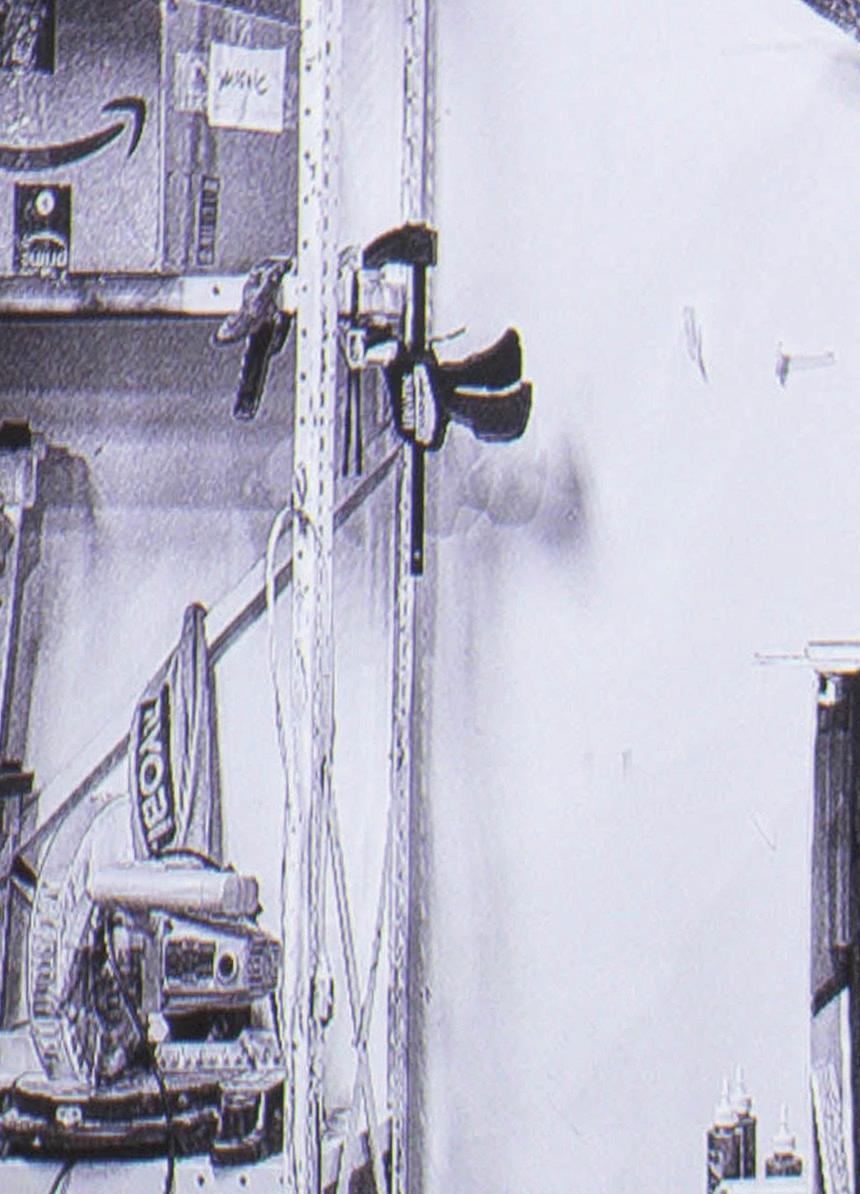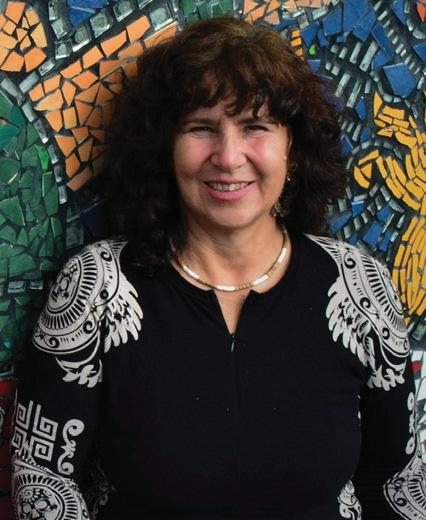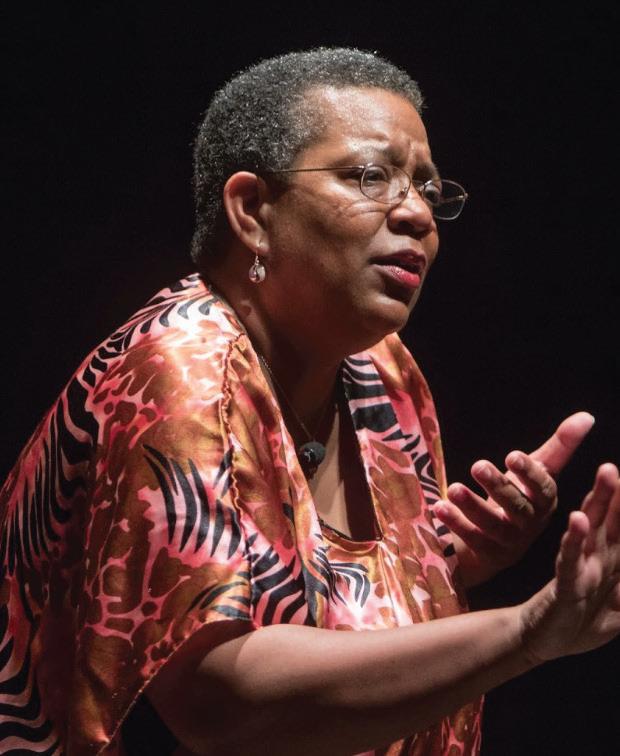








 By LUCAS MOORE Section Editor
By SKY MUNDELL Reporter
By LUCAS MOORE Section Editor
By SKY MUNDELL Reporter
A successful decoy
On the morning of Jan. 28 at approximately 10 a.m., a WSUPD officer responded to a report that a coyote had been spotted on the soccer field adjacent to the Swenson Gym. Upon arrival, the officer saw that the supposed coyote was actually a decoy commonly used by the university to keep wildlife away from the field.
Getting out of hand
At around 10 p.m. on Jan. 30, WSUPD was advised that a door had been severely damaged in Residence Hall 1 at Wildcat Village. While reviewing security camera footage in order to try and find out more about the damaged door, the responding WSU officer noticed a resident possibly consuming alcoholic beverages with a knife concealed in his waistband. Through further investigation, it was found that residents from multiple
nearby dorm rooms were throwing a party in one of the dorm rooms, and that alcohol was present. The whole door will have to be replaced.
Ice Sheet slip-up
WSUPD was dispatched to the Ice Sheet in regard to a traumatic injury that occurred on Jan. 31. A hockey player hit her face against another player and had a large laceration across her nose. As she was being attended by Ice Sheet staff, officers cleared the front parking lot area for medical personnel. She refused transport and there was no further action needed on behalf of WSUPD.
Out of order
WSUPD responded to a call advising of a student stuck in an elevator located at Stewart Wasatch. After being unable to open the inside doors of the elevator, a fire marshal shut the power off to the elevator and turned it back on, causing the elevator to restart and the doors to unjam.
Let’s get crackin’
A WSUPD officer responded to a found property call in which a WSU custodian located a “crack” pipe while cleaning one of the WSU buildings on Feb. 1. The building was closed by the time the item was found. There is no suspect information and no cameras show the area involved. The item was seized and booked at the WSU police department for destruction.
Red handed
A WSUPD officer was conducting an extra patrol on foot in a dorm building within WSU on Feb. 2. While on patrol, the officer detected the odor of marijuana coming from a dorm room. The officer’s investigation found a personal use amount of marijuana and drug paraphernalia. WSU housing staff arrived on the scene, the offender was verbally warned and the substance was seized for destruction.
Get a room!
While on patrol in University Village, WSUPD noticed a vehicle had its tail lights
on in a parking stall on Feb. 2. As the officer approached the vehicle, they noticed a female laying on top of a male who was reclined in the driver seat. The female had minimal clothing on and the male was fully dressed. Upon approaching the vehicle, the officer asked both parties for identification and asked the male to step out of the vehicle. The officer then asked both parties separately if the acts were consensual, to which they both confirmed it was. They were prompted by the officer to find a more private place for such activities.

WSUPD announcement
The WSUPD would like to remind all individuals driving on campus to be mindful and vigilant. Driving in the OGX bus lane is prohibited, as it is a safety hazard. Also, using campus parking lots must be done with caution and the known risk of being around other student drivers. If something does happen, such as a vehicle collision, contact WSUPD and communicate with the other person involved.
Share this story at thesignpostwsu.com











“Mesmerizing Flesh” is a display using textiles and fabrics to symbolize carcasses. This provocative display by Argentinian textile artist Tamara Kostianovsky is at the Ogden Contemporary Arts Center until April 16.
Kostianovsky’s art is made of old fabric, clothing, and abandoned textiles. Using these different cloth items, Kostianovsky crafts sculptures of vegetation, birds and animal carcasses.
Her art makes important statements about violence and power through colorful imagery displayed on animal carcasses made from the artist’s old clothing.
Kostianovsky moved from Argentina to the United States in 2000 to pursue her master’s degree. During this time, Kostianovsky started to consider textiles for creating art.
“I absolutely did not have money to purchase paint … so I started to look at other materials to make my art with,” Kostianovsky said.
Kostianovsky feels her work covers themes of violence against people and animals.
“Something about these life-size sculptures, that to me, spoke about the female body, violence and meat consumption,” Kostianovsky said. “Replicating them and making more of them speaks to me about the never-ending cycle of violence, and that is something I wanted to represent in my
work.”
Kostianovsky also has sculptures of birds with their wings spread. These birds signify the community she grew up in.
Kostianovsky grew up in a Catholic community and felt that the bird imagery had Christian meanings. Like the carcasses, the bird sculptures are also made from brightly colored fabric, but the beaks of the birds are made from acrylic nails.
Some of the textile sculptures are of vegetation and tree trunks out of her fathers old clothing, who has passed away.

“I used some of my clothing and his clothing, so it is kind of a memorial or homage to his life,” Konstianovsky said. “He had spent the last few years of his life dedicated to his
garden, so there was something about the botanical imagery that was very fitting.”
A few of these life-size textile tree trunks will be displayed at the exhibition in Ogden among Kostianovsky’s other works.
“Hearing her talk about how she uses her dad’s clothes was really touching,’’ Jessica Peterson, a psychology major, said. “Among all of the animal carcasses, she has these really pretty tree trunks made out of her father’s clothing.”
“Carne hipnótica” es una obra que usa textiles y tejidos para simbolizar cadáveres. Esta obra provocativo por la artista de textiles Tamara Kostianovsky está en museo de arte contemporáneo de Ogden el hasta el 16 de abril.

El arte de Kostianovsky es del tejido viejo, la ropa y los textiles abandonados. Usando estos artículos distintos de tejido, Kostianovsky hace esculturas de la vegetación, los pájaros y cadáveres de animales.
Su arte hace declaraciones importantes sobre la violencia y el poder por medio de imágenes coloridas sobre cadáveres de animales hechos por la ropa vieja de la artista.
Kostianovsky se mudó desde Argentina a los EE. UU. en el año 2000 para perseguir su maestría. Durante este tiempo, Kostianovsky empezó a considerar el uso de textiles en el arte.
“En absoluto tenía el dinero para comprar la pintura, así que empecé buscando otras materiales para crear mi arte,” dijo Kostianovsky.
“Algo de estas esculturas a escala real, para mí, comentó sobre el cuerpo femenino, la violencia y el consumo de carne,” dijo Kostianovsky. “Replicarlas y hacer más me
habla sobre el ciclo de violencia que nunca para, y eso es algo que quería mostrar con mi arte.”
Kostianovsky también tiene esculturas de pájaros con sus alas extendidas. Esos pájaros representan la comunidad en que ella se crió.
Kostianovsky se crió en una comunidad católica y sentía que la imaginería tenía temas cristianos. Como los cadáveres, las esculturas de pájaros también se hacen de tejido de colores vivos, pero los picos se hacen de uñas acrílicas.
Algunas de las esculturas que representan la vegetación y los troncos de árboles se hicieron de la ropa de su padre que falleció.
“Usé un poco de mi ropa y un poco de la
suya, entonces es un tipo de memorial o homenaje a su vida,” dijo Kostianovsky. “Se dedicaba durante los últimos años de su vida a su jardín, así que era algo de los imagines botánicos que le cabía bien.”
Algunos de estos troncos de textiles a escala real se mostrarán durante la exhibición en Ogden entre las otras obras de Kostianovsky.
“Fue muy conmovedor escucharla hablar sobre su uso de la ropa de su papá,” dijo Jessica Peterson, una estudiante de psicología. “Entre todos los cadáveres, hay algunos troncos de árboles muy bonitos hechos de la ropa de su padre.”
Share this story at thesignpostwsu.com
POR COOPER HATSIS Reportero POR NATHANAEL STOUT Traductor A front and back view of “Cow Turns into a Landscape” by Tamara Kostianovsky. Inspired by a fashion runway, this art piece was put on a rotary chain so it rotates as it hangs. K ENNEDY CAMARENA The Signpost By ALMA BELL ReporterJohn Armstrong, a professor of as- tronomy and physics and the director of Ott Planetarium, discussed the differences and similarities between learning physics and learning the arts in a physics seminar on Feb. 1.


At the start of the pandemic, Arm- strong had no academic interest in art, but decided to take a few classes.
“I’m impressed with our art pro- gram and that they were willing to take me as a student,“ Armstrong said.
As the director of the Ott Planetarium, Armstrong chose to take graph- ic design and video editing online because those would help with the planetarium.

“I just wanted to know what it was like to take a class online,” Armstrong said. ”That kind of morphed into, ‘What does it take to get a degree to- day?’”Armstrong found it fascinating that in order to declare your major as art, students needed to earn at least a Bin three classes: visual studies; surface, shape and form; and material, space and Armstrongtime.shared a rhetoric about art he had heard, saying, “Even a fourth-grader could make modern art
because it is just a perfect square on canvas.” This rhetoric doesn’t make sense to him because he believes there is more to making a piece of art like that, like how the artist must practice in order to get crisp lines while painting.
One of the projects Armstrong did during his online classes was study a chair and then rec- reate that chair. Armstrong drew a connection between drawing and analyzing that chair and the perspective change that can occur after spending time in science.
In Armstrong’s current advanced lab class, he is using a method to apply soldering paste similar to using linocuts. Linocuts are a style of relief printmaking where artists take a piece of linoleum, cut the shape needed out and slide the ink across to create the desired design.Another method Armstrong learned was lost-wax metal casting, which archeologists have found evidence of being per- formed back in Pompeii.
“My favorite part was being in classes with students I have had as students before now as my peers and seeing them succeed in a field they enjoy compared to the struggles they had in astrology,” Armstrong said.
A group of WSU students listening to John Armstrong, director of the planetarium at WSU. Physics Professor Adam Johnston introducing John Armstrong, the director of the planetarium at WSU’s Ogden campus.On Feb. 6-8, the Dee Events Center and the Shepherd Union building welcomed the American Red Cross for a blood drive. The blood drive offered appointments to donors, but accepted walk-ins whenever possible. With the walk-in option, students who were unaware of the event were able to participate when passing the event locations.
“A lot of people just drop in, which is really cool,” Jordan Magda, a phlebotomist and drive lead with the Red Cross, said. “I was here at this place yesterday as the drive lead, and I think we’ve surpassed our goal. We’ve been busy the whole day, so I assume we’re on track to meet our goal again, which is cool.”
Aside from numerous goals regarding the amount of blood collected, the blood drive also hoped to raise awareness.


“Making our students aware of the need for blood and giving them the chance to donate at school will hopefully create lifelong blood donors,” blood drive organizer McLayne Arnold said.
The drive prioritized a smooth experience for participants, from the screening to getting blood drawn.

“The actual donation generally takes 10 minutes or less,” Magda said. “The whole thing, you know the screening portion and everything, you’re here for about 30 minutes.”

Donations from the blood drive will go to patients who are in need of blood transfusions. After donating, you can track your blood and get notified when it has been used for a transfusion.
At the event, participants were able to talk to a representative from the organization “Be the Match,” which compiles a registry of volunteers willing to donate bone marrow or blood stem cells to patients with blood cancers or other diseases. This registry helps patients to find people with whom their bone marrow or blood stem cells match, in the case that they don’t have a match within their own family.
“I know that when we come out to the universities that [Be the Match] will generally be here too, because they have a higher success rate among university students,” Magda said.
With a vote of 20–8, the Utah State Senate passed the controversial House Bill 215, also known as the Voucher Bill, on Jan. 25.

“This bill establishes the Utah Fits All Scholarship Program and provides funding for the program and a doubling of an educator salary adjustment,” the Utah State Legislature website states.
The bill gives Utah K-12 students an $8,000 scholarship per student if they choose to attend a private school. The money will be paid by the state government to the private school along with some administrative funding.
Families who homeschool will also receive the stipend in order to cover the costs of homeschooling. The bill essentially gives each student an $8,000 voucher.
However, if a student attends public schooling, that $8,000 helps fund the public
school they attend, giving those teachers a pay raise.
The bill was signed by Gov. Spencer Cox on Jan. 28, codifying it into state law along with another controversial bill, the Transgender Medical Treatment and Procedures, or SB16. Many people are not happy about this, and many educators have spoken out against this bill.
“As somebody who has been a teacher in public education, and now I’m teaching teachers who are primarily going into public education, it’s definitely not a win,” Daniel Pyle, associate professor of education at Weber State University, said. “Obviously, there’s the part of the bill that helps increase teachers’ pay, which I think also was done for public perception. But there’s not going to be a real meaningful or sizable increase in teacher salaries. The voucher system is really going to be a positive for the select few and probably to support families that don’t need financial support. There’s just a lot of things
to be concerned [about], whether it was the way it was passed or has been pushed through.”
The bill does not require private schools to be accredited, to use curricula aligned to Utah core standards or to employ professionally-licensed teachers and administrators.
The Utah Education Association has spoken out against the passing of this bill. The organization highlighted an income threshold that would prevent high income families from qualifying, and the scholarship amount that the bill would give to those private school students is almost double what the current weighted pupil unit is, which is $4,038.
“Funding is being diverted from areas that we could be pouring more resources into,” Pyle said. “Not only does it set a bad precedent for how the bill was pushed through and passed, but also earmarking funding to homeschooling and private education, as opposed to funneling that money through
more public education entities.”
The Utah Senate Democrats have also publicly spoken out against the bill, stating the bill “fails to support students and weakens public education by redirecting public funds to private institutions without any safeguards, protections against discrimination and transparency.”
The party group wants to advocate for teachers and students and feels that the passing of the bill hindered the efforts to help either group.
“We will always advocate for salary increases and respect for our teachers who work diligently to enrich and develop the minds of our children,” a Utah Senate Democrat said in a statement on utahpolicy.com. “We are extremely disappointed in the policy tactic to entangle teacher salaries with vouchers — two issues that deserve separate consideration and meaningful input from taxpayers, educators and parents. We will continue to fight for a strong public education system to
A child watches Gov. Spencer Cox speak at the house chamber. THE OFFICE OF THE GOVERNORsupport all Utahns.”
This isn’t the first time the Utah Legislature passed a voucher bill.


In 2007, the Utah Senate passed a similar voucher program during their legislative session. However, the bill was repealed after Utah residents rallied to put a referendum on the ballot to rid the state of the program. At the time, 62% of Utah residents were opposed to the voucher system.
HB 215 has caused a lot of division in the state of Utah and has led many to pay more attention to the politics of the world around them. Since the bill was repealed once, some educators would like that to happen again. Pyle wants people to pay attention to what’s going on in Congress.
“If anything, it should wake people up to become more active in not only assembling, but making sure again that families in which this bill is not going to benefit, that their voices be heard,” Pyle said. “It just calls for more advocacy and more attention again to what’s
being passed in the State of Utah that doesn’t look to serve and improve outcomes for the many. You want to see things that are passed within the state of Utah looking out for the masses and not just a select few.”
Though many are glad to see teachers will be paid more, there are concerns that the money could be better spent somewhere else. Some educators are worried the money going to private and homeschooling will create a distraction from the areas of public schooling that need extra help right now.
“I’d like to see more of that money earmarked to not only increase teacher pay, but also to help the mental health or the behavioral side of education, especially with kids, again, who are exposed to trauma, and just see that money really directed at families and communities and kids that need the funding the most,” Pyle said.
Share this story at thesignpostwsu.com

El 25 de enero, el Senado del Estado de Utah aprobó el controversial proyecto de ley 215, el Voucher Bill, con una votación de 208.

“Este proyecto de ley establece el programa de becas Utah se adapta a todos y proporciona financiación para el programa y una duplicación de un ajuste salarial de los educadores”, afirma el sitio web de la Legislatura del Estado de Utah.
El proyecto de ley da a los estudiantes de Utah K-12 una beca de $ 8.000 por estudiante si optan por asistir a una escuela
privada. El dinero será pagado por el gobierno estatal a la escuela privada junto con algunos fondos administrativos. Las familias que educan a sus hijos en casa también recibirán el estipendio para cubrir los costes de la educación en casa. El proyecto de ley otorga esencialmente a cada estudiante un vale de 8.000 dólares.
Sin embargo, si un estudiante asiste a la escuela pública, que $ 8.000 ayuda a financiar la escuela pública a la que asisten, dando a los maestros un aumento de sueldo.
El proyecto de ley fue firmado por el gobernador Spencer Cox el 28 de enero, codificándolo en la ley estatal junto con otro polémico proyecto de ley, el Tratamiento Médico Transgénero y Procedimientos, o SB16. Muchas personas no están contentas con esto, y muchos educadores han hablado en contra de este proyecto de ley.
“Como alguien que ha sido maestro en la educación pública, y ahora estoy enseñando a los maestros que van principalmente a la educación pública, definitivamente no es una victoria”, dijo Daniel Pyle, profesor asociado de educación en la Universidad Estatal de Weber. “Obviamente, está la parte del proyecto de ley que ayuda a aumentar el salario de los profesores, que creo que también se hizo para la percepción pública. Pero no va a haber un aumento realmente significativo o considerable en los salarios de los profesores. El sistema de vales va a ser realmente positivo para unos pocos elegidos y probablemente para apoyar a las familias que no necesitan apoyo financiero. Hay un montón de cosas por las que preocuparse, ya sea por la forma en que se aprobó o se ha impulsado”.
El proyecto de ley no exige que las es-
cuelas privadas estén acreditadas, utilicen planes de estudios alineados con las normas básicas de Utah o empleen a profesores y administradores con licencia profesional.
La Asociación de Educación de Utah se ha pronunciado en contra de la aprobación de este proyecto de ley. La organización destacó un umbral de ingresos que impediría a las familias de altos ingresos calificar, y la cantidad de la beca que el proyecto de ley daría a esos estudiantes de escuelas privadas es casi el doble de lo que es la unidad de alumno ponderado actual, que es de $ 4,038.
“Se están desviando fondos de áreas a las que podríamos destinar más recursos”, dijo Pyle. “No sólo sienta un mal precedente por la forma en que el proyecto de ley fue impulsado y aprobado, sino también destinar fondos a la educación en casa y la educación privada, en lugar de canalizar ese dinero a
POR BRISA ODENTHAL Reportero POR MARIANNA LOPEZ-LURITTA Traductor Gov. Spencer Cox speaking to an audience about the bills he is about to sign like HB 215. THE OFFICE OF THE GOVERNORtravés de más entidades de educación pública.”
Los demócratas del Senado de Utah también se han pronunciado públicamente en contra del proyecto de ley, afirmando que “no apoya a los estudiantes y debilita la educación pública al redirigir fondos públicos a instituciones privadas sin ninguna salvaguarda, protección contra la discriminación y transparencia.”



El grupo del partido quiere abogar por los profesores y los estudiantes y considera que la aprobación del proyecto de ley obstaculiza los esfuerzos por ayudar a ambos grupos.
“Siempre abogaremos por aumentos salariales y por el respeto a nuestros profesores, que trabajan diligentemente para enriquecer y desarrollar las mentes de nuestros hijos”, dijo un demócrata del Senado de Utah en un comunicado publicado en utahpolicy.com.
“Estamos muy decepcionados por la táctica política de enredar los salarios de los profesores con los vales - dos temas que merecen consideración separada y una aportación significativa de los contribuyentes, educadores y padres. Vamos a seguir luchando por un sistema de educación pública fuerte para apoyar a todos los habitantes de Utah.”
No es la primera vez que la Legislatura de Utah aprueba un proyecto de ley de vales.
En 2007, el Senado de Utah aprobó un programa de vales similar durante su sesión legislativa. Sin embargo, el proyecto de ley fue derogado después de que los residentes de Utah se unieran para poner un referéndum en la papeleta para librar al estado del programa. En aquel momento, el 62% de los residentes de Utah se oponían al sistema de vales.
La ley HB 215 ha causado mucha división
en el estado de Utah y ha llevado a muchos a prestar más atención a la política del mundo que les rodea. Dado que el proyecto de ley fue derogado una vez, a algunos educadores les gustaría que eso volviera a suceder. Pyle quiere que la gente preste atención a lo que ocurre en el Congreso.
“En todo caso, debería despertar a la gente a ser más activos en no sólo la reunión, pero asegurándose de nuevo que las familias en las que este proyecto de ley no va a beneficiar, que sus voces sean escuchadas”, dijo Pyle. “Sólo pide más defensa y más atención de nuevo a lo que está siendo aprobado en el Estado de Utah que no busca servir y mejorar los resultados para los muchos. Quieres ver las cosas que se aprueban en el estado de Utah mirando hacia fuera para las masas y no sólo unos pocos elegidos “.
Aunque muchos están contentos de ver
que los maestros se les pagará más, hay preocupaciones de que el dinero podría ser mejor gastado en otro lugar. A algunos educadores les preocupa que el dinero que se destine a la educación privada y en casa distraiga la atención de las áreas de la educación pública que necesitan ayuda adicional en este momento.
“Me gustaría ver más de ese dinero destinado no sólo a aumentar la remuneración de los maestros, sino también para ayudar a la salud mental o el lado del comportamiento de la educación, especialmente con los niños, de nuevo, que están expuestos a un trauma, y sólo ver que el dinero realmente dirigido a las familias y las comunidades y los niños que más necesitan la financiación”, dijo Pyle.
Share this story at thesignpostwsu.com
Gov. Spencer Cox posing for a photo with a child during a reception held on Jan. 19, 2023. An audience of children and adults listen to Gov. Spencer Cox as he talks about the Voucher Bill he signed on Jan. 28, 2023. A group of children listens to Gov. Spencer Cox speak about the legislative bills coming from the current legislative session. THE OFFICE OF THE GOVERNOR THE OFFICE OF THE GOVERNOR THE OFFICE OF THE GOVERNOR By RAYSHAUN BAKER-LYNCH Asst. Section EditorFeb. 12 is the Super Bowl for the Philadelphia Eagles and the Kansas City Chiefs, marking another year in which the big game won’t feature the Dallas Cowboys. The Cowboys haven’t been to a Super Bowl, or even an NFC Championship game, in 26 years.
With a Super Bowl absence that’s lasted over a quarter of a century, it’s time to ask — who killed the Dallas Cowboys?
Last week, sports editor Simon Mortensen said owner Jerry Jones killed the Cowboys. While Jones did play a role, in my opinion, outside influences played a more prominent factor than Jones in Dallas’s demise.
In 1978, due to heavy televising of the team’s games, NFL films put highlights for each team and gave them nicknames. The Cowboys were nicknamed “America’s Team.”
This name has caused the opposition to play harder against the Cowboys. When Dallas opened their new stadium in 2009, their opening game was against their rivals, the New York Giants.
The Giants ended up beating the Cowboys, and quarterback Eli Manning signed his name in the visitors’ locker room to commemorate his role in the upsetting of the Cowboys on their big day. After this, Jones memorialized Manning’s signature.
As a team, they are more despised than any other by NFL players and fans.
“I just don’t like them,” former New England Patriots wide receiver Julian Edelman said on a podcast.
Edelman said the Cowboys don’t even have red, white and blue colors. He sees the Patriots more than Dallas as America’s team.
Dallas fans talk a lot of smack. The irony is that these fans still believe in their team despite how many times the Cowboys fall on
their face when it counts.
Being a Dallas fan is equivalent to being a New York Knicks fan — neither franchise has things work out in their favor.
With the last play of this year’s game against the San Francisco 49ers, running back Ezekiel Elliott lined up in the center position while the offensive linemen took receiver spots. Rather than throw a Hail Mary, the Cowboys ended their year on an embarrassing play — an unbearable incident for Dallas fans.
Many fans took to Twitter after the play, burning jerseys and destroying their televisions because they felt let down again.
The Cowboys have stayed relevant because of the teams they’ve had in the past. They’ve had good teams since the turn of the century that have gotten them to the playoffs, but they never win when it counts.
Dak Prescott is the starting quarterback for the Cowboys and has a 2–4 playoff re-
cord. There have been times when Prescott was supposedly a better quarterback than his playoff opponents in elimination games these past few seasons, but he’s continued to lose. Prescott has been a failure, so who knows what will happen this offseason.

Then there’s coaching. Jones’ last hire, Mike McCarthy, called one of the dumbest plays in history — a play I mentioned earlier against the 49ers that resulted in them getting sent home.
Jones has made good and bad decisions in the past 20 years. That said, Dallas has failed to consider one massive factor: Some players don’t have what it takes to play for the Cowboys. Being called America’s team by the media is a lot of pressure, and I believe that has caused them to underachieve as an organization, disappointing their fans.
El 12 de febrero es el Super Bowl para los Philadelphia Eagles y los Kansas City Chiefs, marcando otro año en el que el gran juego no contará con los Dallas Cowboys. Los Cowboys no han estado en un Super Bowl, ni siquiera en un juego de Campeonato de la NFC, en 26 años.
Con una ausencia en el Super Bowl que ha durado más de un cuarto de siglo, es tiempo de preguntarse: ¿quién mató a los Dallas Cowboys?
La semana pasada, el editor de deportes Simon Mortensen dijo que el dueño Jerry Jones mató a los Cowboys. Si bien Jones jugó un papel, en mi opinión, las influencias externas jugaron un factor más prominente que Jones en la caída de Dallas.

En 1978, debido a la gran cantidad de transmisión por televisión de los juegos del equipo, NFL Films destacaron a cada equipo y les dieron apodos. Los Cowboys fueron apodados “El equipo de América”.
Este nombre ha provocado que la oposición juegue más duro contra los Cowboys. Cuando Dallas inauguró su nuevo estadio en 2009, su primer partido fue contra sus rivales, los New York Giants.
Los Giants terminaron venciendo a los
de los visitantes para conmemorar su papel en la derrota de los Cowboys en su gran día. Después de esto, Jones memorizo la firma de Manning.
Como equipo, son más despreciados que cualquier otro por los jugadores y aficionados de la NFL.
“Simplemente no me gustan”, dijo el ex receptor abierto de los New England Patriots, Julian Edelman, en un podcast.

Edelman dijo que los Cowboys ni siquiera tienen los colores rojo, blanco y azul. Él ve a los Patriots más que a Dallas como el equipo de Estados Unidos.
Los fanáticos de Dallas dicen muchas palabrería. Lo irónico es que estos fanáticos todavía creen en su equipo a pesar de las veces que los Cowboys fracasan cuando es necesario.
Ser fanático de Dallas es equivalente a ser fanático de los New York Knicks: ninguna de las dos franquicia tiene las cosas a su favor.
Con la última jugada del partido de este año contra los San Francisco 49ers, el corredor Ezekiel Elliott se alineó en la posición central mientras que los de la línea ofensiva ocuparon el lugar de receptor. En lugar de lanzar un Ave María, los Cowboys terminaron su año con una jugada vergonzosa- un incidente insoportable para los fanáticos de Dallas.
Muchos fanáticos acudieron a Twitter después de la jugada, quemaron camisetas y destruyeron sus televisores porque se sin-










debido a los equipos que han tenido en el pasado. Han tenido buenos equipos desde el cambio de siglo que los han llevado a los playoffs, pero nunca ganan cuando debería importar.







Dak Prescott es el mariscal de campo titular de los Cowboys y tiene un récord de 2-4 en los playoffs. Ha habido momentos en los que Prescott supuestamente era un mejor mariscal de campo que sus oponentes de playoffs en los juegos de eliminación en estas últimas temporadas, pero él ha continuado perdiendo. Prescott ha sido un fracaso, así que quién sabe qué pasará esta temporada baja.
Luego está el entrenamiento. La última contratación de Jones, Mike McCarthy, calificó una de las jugadas más tontas de la historia, una jugada que mencioné anteriormente contra los 49ers que resultó en que fueran enviados a casa.
Jones ha tomado buenas y malas decisiones en los últimos 20 años. Dicho esto, Dallas no ha tenido en cuenta un factor importante: algunos jugadores no tienen lo necesario para jugar con los Cowboys. Ser llamado el equipo de América por los medios es mucha presión, y creo que eso los ha llevado a tener un bajo desempeño como organización, decepcionando a sus fanáticos.
The Dallas Cowboys logo printed on a football.


































